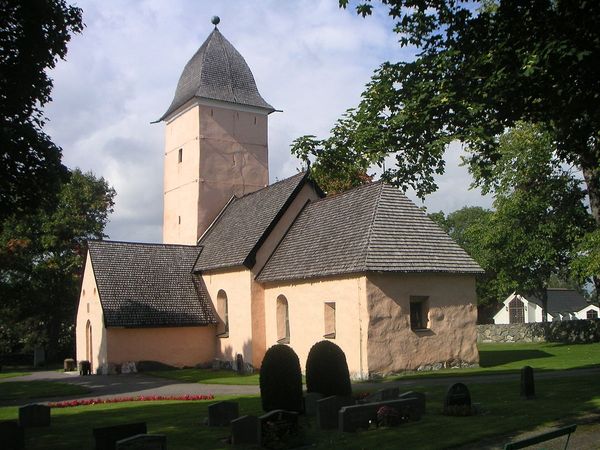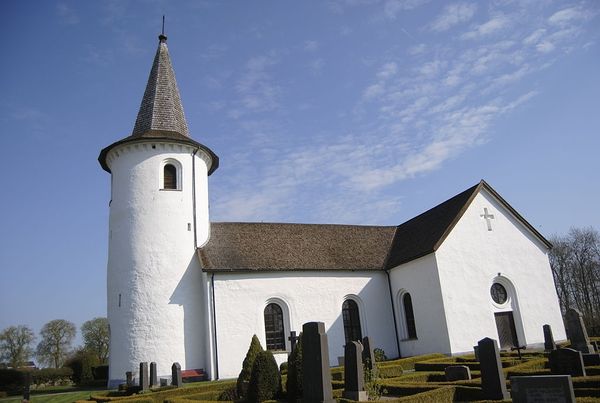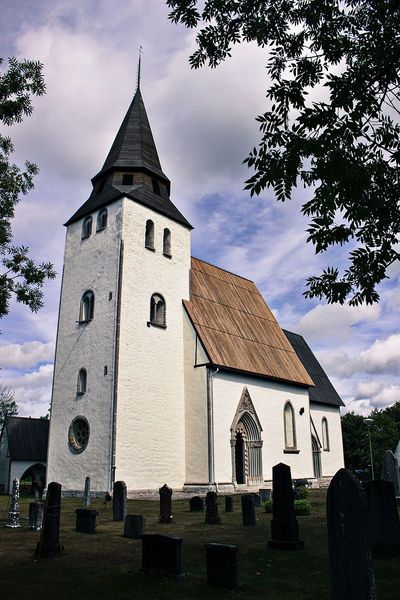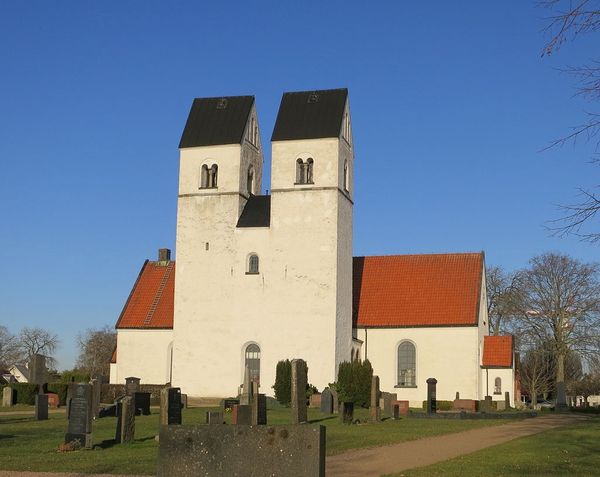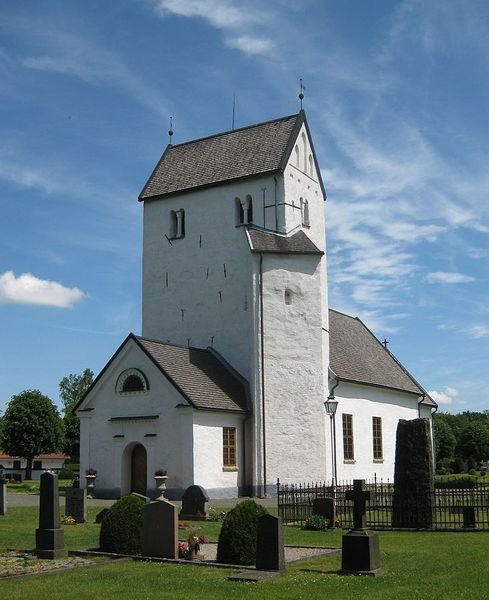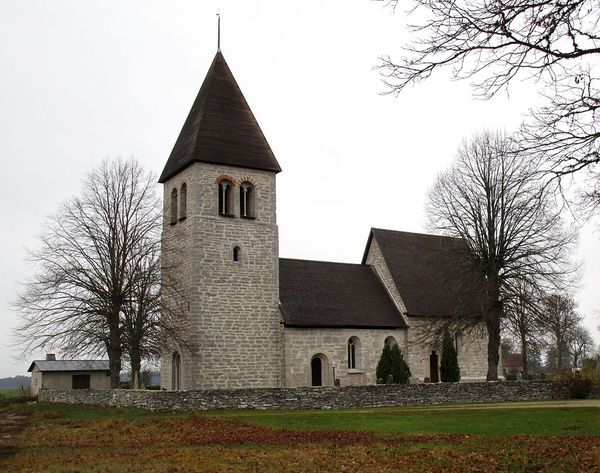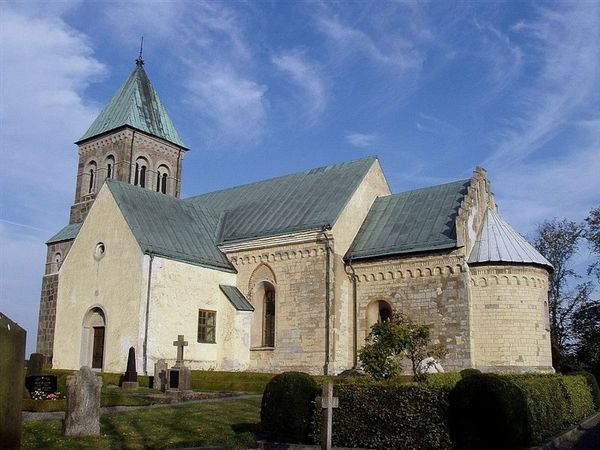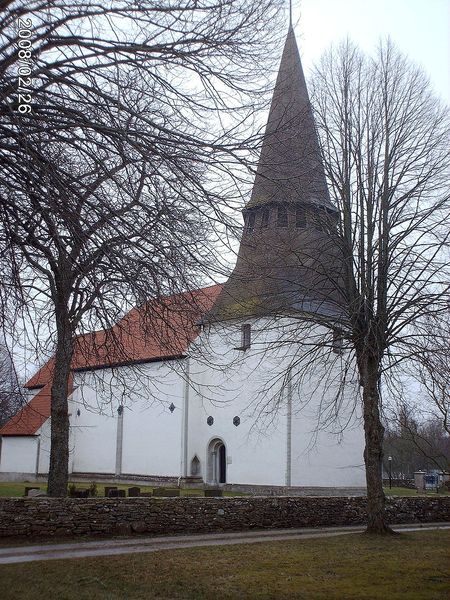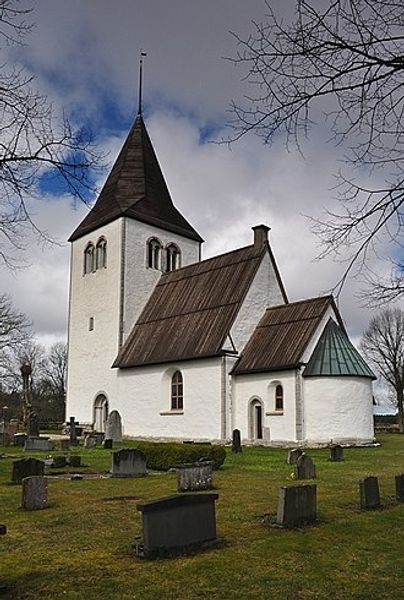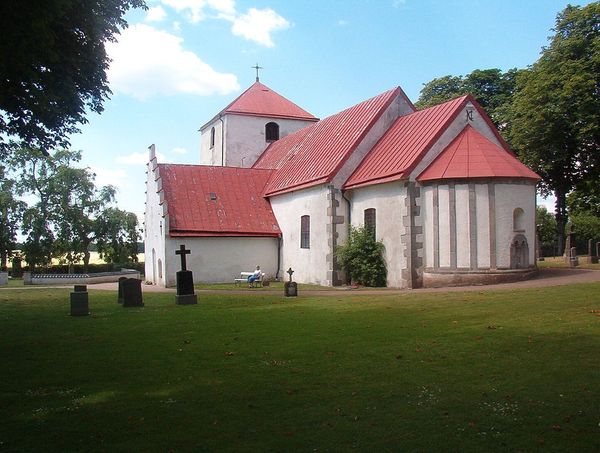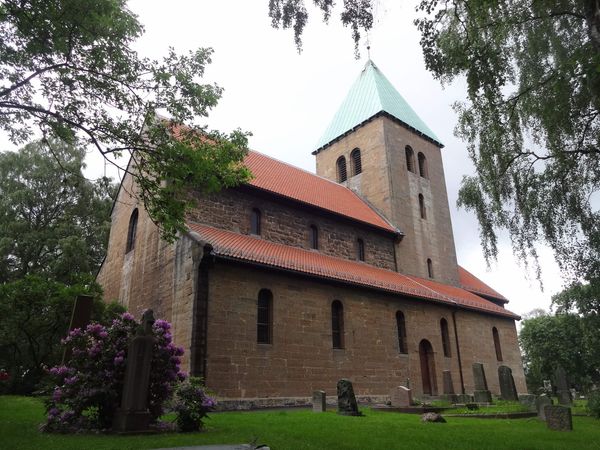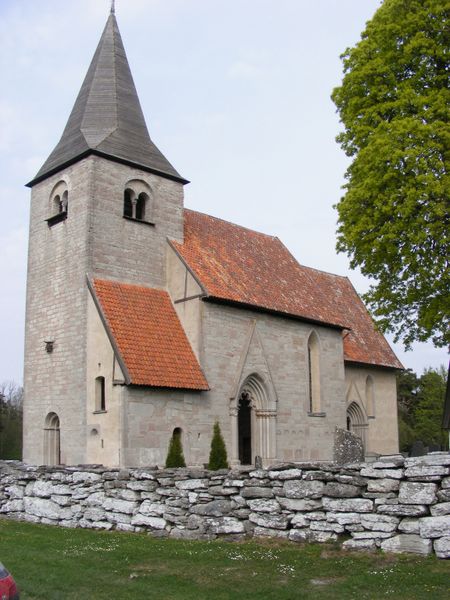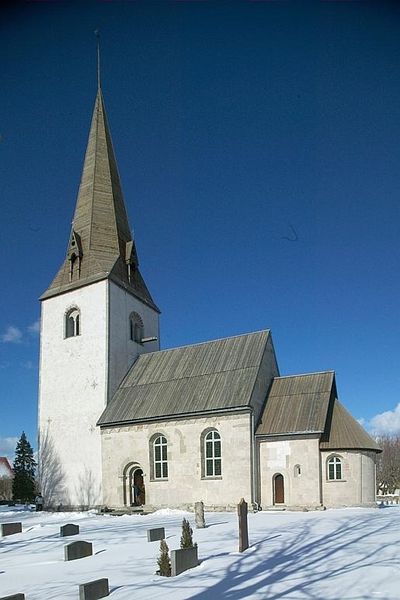
photography, architecture
#
medieval
#
landscape
#
historic architecture
#
photography
#
romanesque
#
arch
#
architecture
Copyright: Public domain
Editor: So, this photograph captures Husaby Church in Sweden, dating back to around 1100. It’s an example of Romanesque architecture. The stone construction and those imposing towers give it such a weighty, timeless feel. What's your interpretation of it? Curator: Seeing this image, I'm immediately drawn to its socio-political implications within its historical context. This church wasn’t just a place of worship; it was a statement of power, of Norman and Christian influence solidifying itself in the Swedish landscape. Think about the labor, the resources, the sheer will required to erect such a structure in the 12th century. Whose stories are missing when we only celebrate this achievement? Editor: That’s a fascinating perspective. I was focused on the visual elements, the arches, the stonework, without really considering the human cost. The churchyard around it speaks of community, I suppose, over the centuries. Curator: Exactly! And the placement within the landscape isn't accidental. Consider how this architecture interacts with the surrounding community – the church as a central, almost domineering figure in the social landscape. Editor: Are there other structures, that you know of, that would be a visual contrast to this in some way? Curator: Absolutely. Thinking about churches built with more participation from the communities perhaps…the smaller, wooden stave churches of Norway, born from the transition period out of Norse paganism, present a striking visual and societal contrast. But also in places where resistance movements were born in opposition to colonization and its buildings such as the Mission era structures of the Americas... Editor: That contrast helps to ground the image in history more. I now notice it even more, how the architecture seems to assert dominance but also stands testament to enduring societal values of its patrons, good or bad. Thanks for clarifying some of those points for me. Curator: It’s essential to understand these power dynamics reflected in art and architecture and not take their presence for granted.
Comments
No comments
Be the first to comment and join the conversation on the ultimate creative platform.
